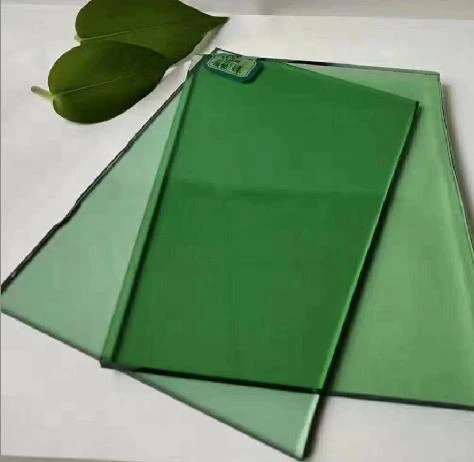The Future of Architecture Reflective Window Panels
In the realms of modern architecture and design, one particular feature has stood out for its innovative functionality and aesthetic charm reflective window panels. These panels are revolutionizing the way buildings interact with their environment, and they are becoming a staple in contemporary architectural practices. This article explores the benefits, challenges, and future potential of reflective window panels in urban design.
Understanding Reflective Window Panels
Reflective window panels are typically made from glass that has been coated with a thin layer of metallic or dielectric materials. This coating allows the panels to reflect a significant portion of incoming solar radiation while allowing natural light to penetrate the interior spaces. The dual capability of these panels—reflecting heat while still providing daylight—makes them a popular choice among architects and builders.
Energy Efficiency
One of the most compelling advantages of reflective window panels is their ability to enhance energy efficiency. By minimizing the amount of heat that enters a building through the windows, these panels can significantly reduce the reliance on air conditioning systems. This leads to lower energy consumption and reduced utility costs, providing a substantial economic benefit for both residential and commercial buildings. Additionally, less energy usage translates to a lower carbon footprint, contributing to more sustainable practices within the construction industry.
Aesthetic Appeal
Beyond their functional benefits, reflective window panels bring a unique aesthetic quality to buildings. The shimmering surface of these windows can create stunning visual effects, reflecting the surrounding environment and changing with the time of day and weather conditions. This dynamic appearance not only enhances the visual appeal of structures but also allows buildings to blend harmoniously with their surroundings. As urban areas continue to expand, architects are increasingly drawn to the sleek and modern look that reflective panels offer.
Privacy and Security
reflective window panels
Reflective window panels also provide an added layer of privacy for occupants. During daylight hours, the reflective surface obscures views from the outside, allowing individuals inside to enjoy their space without the worry of being watched. This is especially beneficial for residential homes and offices situated in busy urban environments. While privacy decreases during the night when the interior lights are on, strategic use of window treatments can effectively mitigate this issue.
Challenges of Using Reflective Window Panels
Despite their numerous advantages, the use of reflective window panels is not without its challenges. One primary concern is glare, which can affect nearby buildings and pedestrians. Intense reflections can not only be distracting but may also create uncomfortable environments for those on the ground or in adjacent structures. Addressing this issue often requires careful consideration during the building's design phase, ensuring that the angles and orientation of the reflective surfaces do not produce unwanted glare.
Furthermore, while reflective window panels are effective in reducing solar heat gain, they can sometimes limit the amount of visible light entering a space. This can lead to reliance on artificial lighting, which may counteract some of the energy efficiency benefits. Striking a balance between transparency and reflectivity is essential in utilizing these panels effectively.
The Future of Reflective Window Panels
As technology continues to advance, the future of reflective window panels looks promising. Innovations such as electrochromic glass, which can change transparency based on electrical stimulation, hold significant potential for addressing existing challenges. Such developments may lead to windows that can adapt in real-time, reflecting solar energy while maximizing visible light during different times of the day.
Moreover, the integration of smart technologies into reflective window panels could further enhance their functionality. Building management systems that optimize energy use, adjust window coatings based on external conditions, and improve occupant comfort are just a few possibilities that could emerge in the coming years.
Conclusion
Reflective window panels represent a significant advancement in architectural design, providing a perfect blend of functionality and aesthetics. With their ability to enhance energy efficiency, improve privacy, and contribute to a building’s visual appeal, these panels are set to play a crucial role in the future of urban architecture. As technology evolves and innovations emerge, we can expect reflective window panels to become even more versatile, paving the way for sustainable and striking designs that harmonize with the world around them.
 Afrikaans
Afrikaans  Albanian
Albanian  Amharic
Amharic  Arabic
Arabic  Armenian
Armenian  Azerbaijani
Azerbaijani  Basque
Basque  Belarusian
Belarusian  Bengali
Bengali  Bosnian
Bosnian  Bulgarian
Bulgarian  Catalan
Catalan  Cebuano
Cebuano  Corsican
Corsican  Croatian
Croatian  Czech
Czech  Danish
Danish  Dutch
Dutch  English
English  Esperanto
Esperanto  Estonian
Estonian  Finnish
Finnish  French
French  Frisian
Frisian  Galician
Galician  Georgian
Georgian  German
German  Greek
Greek  Gujarati
Gujarati  Haitian Creole
Haitian Creole  hausa
hausa  hawaiian
hawaiian  Hebrew
Hebrew  Hindi
Hindi  Miao
Miao  Hungarian
Hungarian  Icelandic
Icelandic  igbo
igbo  Indonesian
Indonesian  irish
irish  Italian
Italian  Japanese
Japanese  Javanese
Javanese  Kannada
Kannada  kazakh
kazakh  Khmer
Khmer  Rwandese
Rwandese  Korean
Korean  Kurdish
Kurdish  Kyrgyz
Kyrgyz  Lao
Lao  Latin
Latin  Latvian
Latvian  Lithuanian
Lithuanian  Luxembourgish
Luxembourgish  Macedonian
Macedonian  Malgashi
Malgashi  Malay
Malay  Malayalam
Malayalam  Maltese
Maltese  Maori
Maori  Marathi
Marathi  Mongolian
Mongolian  Myanmar
Myanmar  Nepali
Nepali  Norwegian
Norwegian  Norwegian
Norwegian  Occitan
Occitan  Pashto
Pashto  Persian
Persian  Polish
Polish  Portuguese
Portuguese  Punjabi
Punjabi  Romanian
Romanian  Russian
Russian  Samoan
Samoan  Scottish Gaelic
Scottish Gaelic  Serbian
Serbian  Sesotho
Sesotho  Shona
Shona  Sindhi
Sindhi  Sinhala
Sinhala  Slovak
Slovak  Slovenian
Slovenian  Somali
Somali  Spanish
Spanish  Sundanese
Sundanese  Swahili
Swahili  Swedish
Swedish  Tagalog
Tagalog  Tajik
Tajik  Tamil
Tamil  Tatar
Tatar  Telugu
Telugu  Thai
Thai  Turkish
Turkish  Turkmen
Turkmen  Ukrainian
Ukrainian  Urdu
Urdu  Uighur
Uighur  Uzbek
Uzbek  Vietnamese
Vietnamese  Welsh
Welsh  Bantu
Bantu  Yiddish
Yiddish  Yoruba
Yoruba  Zulu
Zulu 

